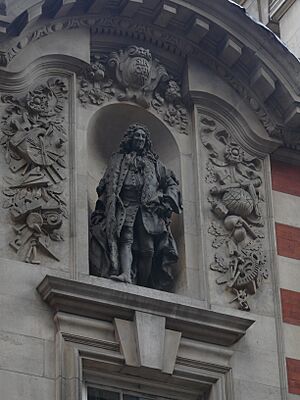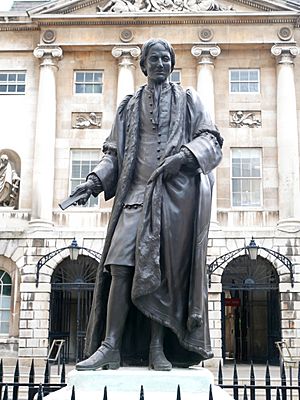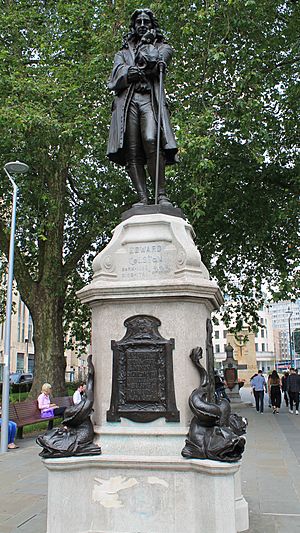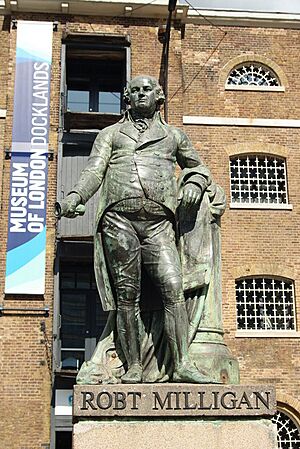List of public statues of individuals linked to the Atlantic slave trade facts for kids
This article is about statues of people who were connected to the Atlantic slave trade. These statues are often found in public places, and they remind us of a difficult part of history. The Atlantic slave trade involved capturing and selling millions of African people, forcing them to work in other parts of the world, especially in the Americas. Many of these statues have become subjects of discussion and protest because of the painful history they represent.
Contents
Statues in the United Kingdom
Many statues in the UK honor people who were involved in the slave trade. Here are some examples:
John Cass
John Cass was a person who made a lot of money from the Atlantic slave trade. He had direct connections with people who bought and sold enslaved people in the Caribbean and Africa. An old lead statue of Cass was moved several times. A copy of it is now in Jewry Street, London.
Sir Francis Drake
Sir Francis Drake was a famous English explorer and sailor. However, he was also involved in capturing, transporting, and selling enslaved people. He played a big role in starting the early British slave trade. His statue is located in Tavistock.
Thomas Guy
Thomas Guy had investments in a company called the South Sea Company, which was involved in the slave trade. His statue is in front of Guy's Hospital in London. The hospital has said they are working to understand how to address the statue's connection to slavery.
Edward Colston
Edward Colston was a slave trader from Bristol. His statue in Bristol became a symbol of the slave trade's history. In 2020, protesters pulled down his statue and pushed it into Bristol Harbour.
King James II
James II was a king of England. Before he became king, as the Duke of York, he was the main leader and biggest investor in the Royal African Company. This company was very active in the slave trade. His statue is in Trafalgar Square, London.
Robert Milligan
Robert Milligan was a Scottish merchant and slave trader. His statue was located outside the Museum of London Docklands. It was removed after a request from a local trust.
Robert Geffrye
Robert Geffrye was an English merchant who earned some of his wealth from slavery. He even partly owned a slave ship. There was a request to remove his statue outside the Museum of the Home in London. The Museum decided to keep the statue but explain its history and meaning more clearly.
Commission for Diversity in the Public Realm
In June 2020, the Mayor of London, Sadiq Khan, created a group called the Commission for Diversity in the Public Realm. This group's job is to look at statues and other public artworks in London. They want to make sure these landmarks show London's achievements and its diverse population. Khan said that some statues of people involved in slavery should be removed. He also mentioned that there aren't enough statues representing people of color, Black people, women, or the LGBT community. The Mayor also promised to help create a national museum or memorial about slavery.
Statues in the Channel Islands
George Carteret
A statue of Sir George Carteret was put up in Saint Peter, Jersey, in 2014. Carteret was a supporter of King Charles II. The statue was put up to celebrate the 350th birthday of New Jersey, a place in America that was named after Jersey. In 2020, after the George Floyd protests, this statue was repeatedly marked with graffiti.
See also








